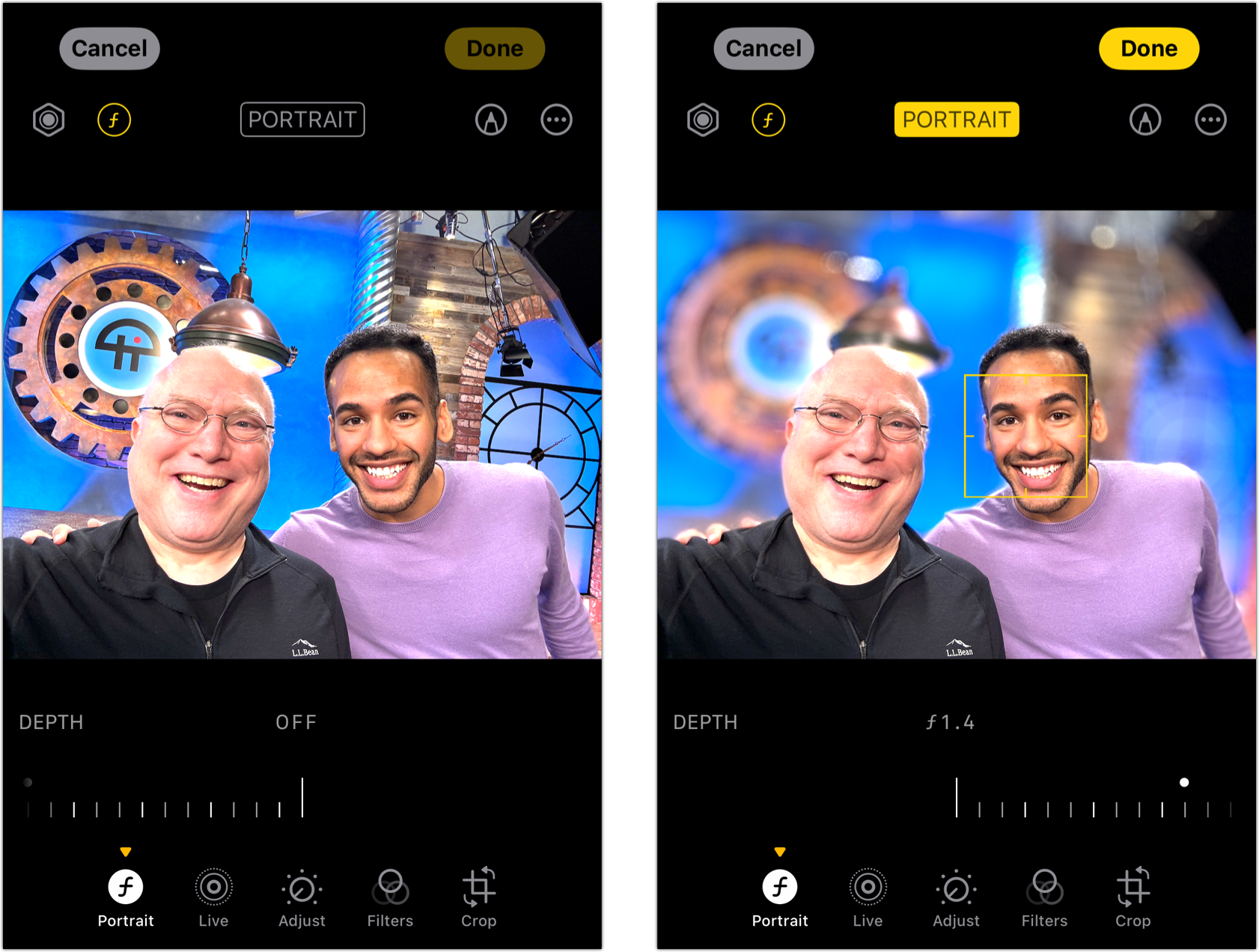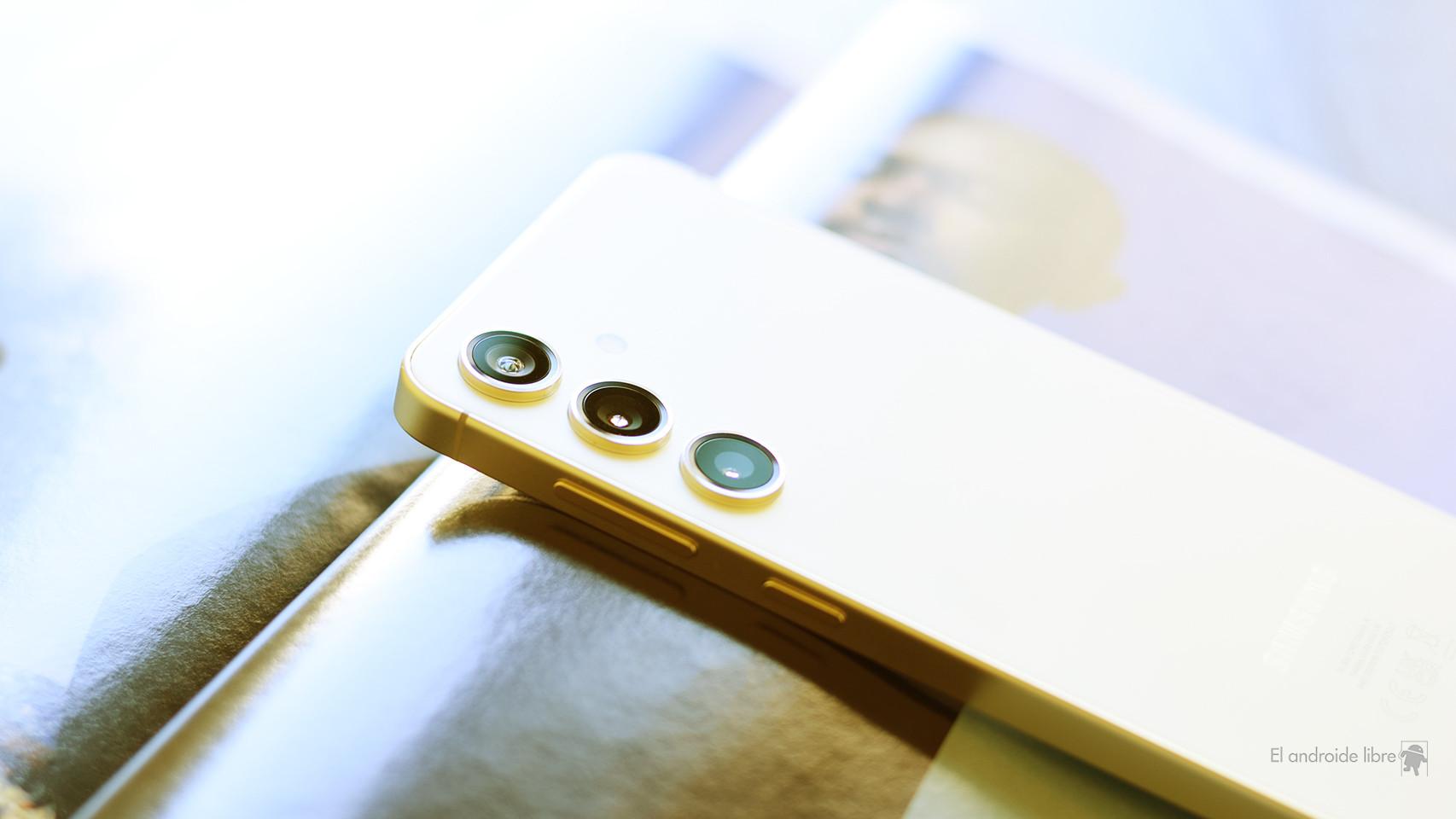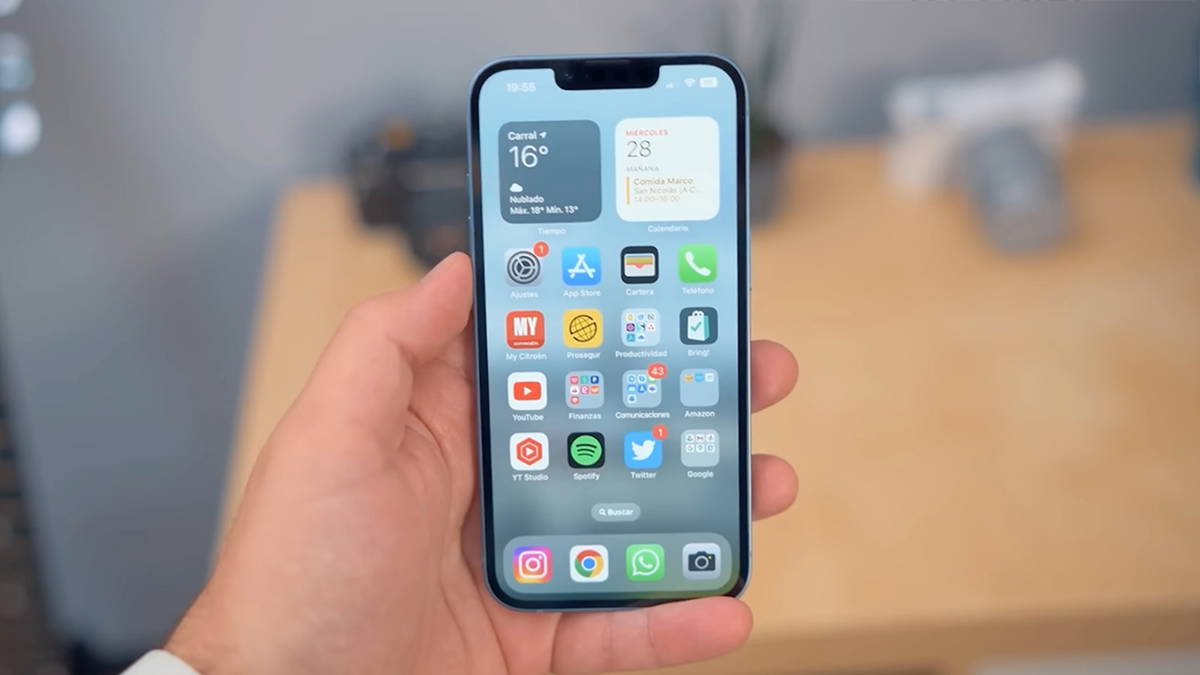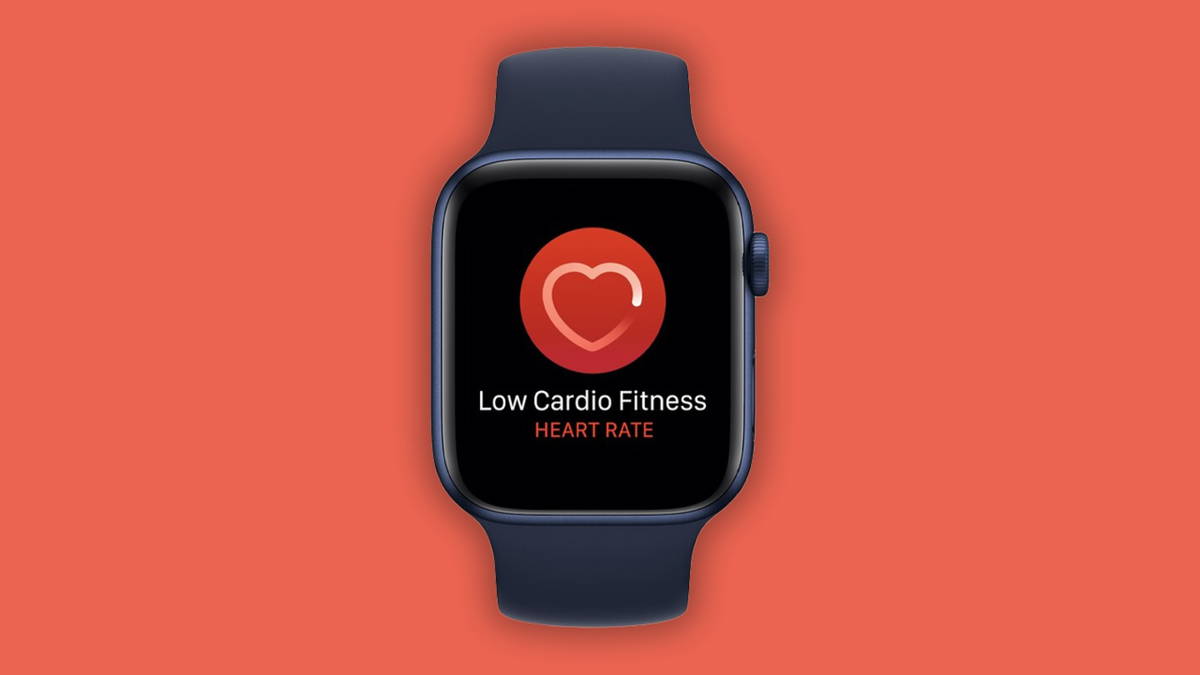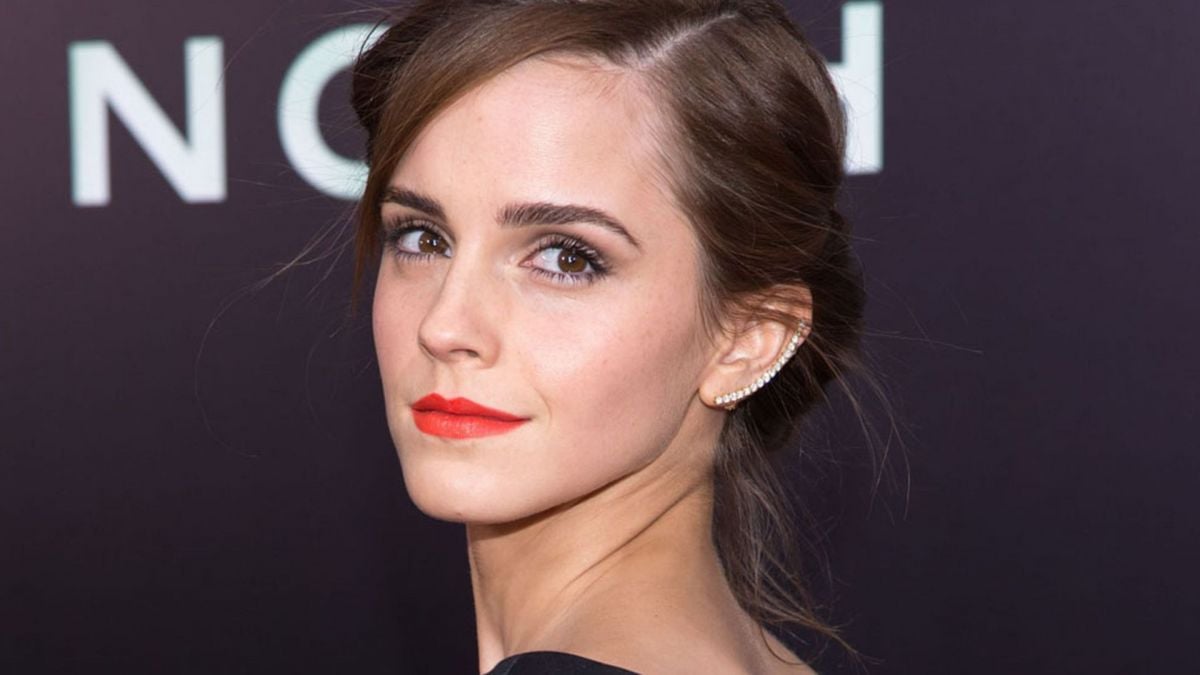Photos can appear when one area is in focus and the other is blurry, giving a sense of depth in a two-dimensional image that matches the way our eyes focus on objects, even though we don’t usually perceive it. This technique once required a lens of the type found on an SLR or DSLR (analog or digital single-lens reflex) or mirrorless camera. You adjust the f-stop, traditionally denoted by an ƒ, which changes the depth of field or range between the camera lens and another focusable point.
Apple’s move to a lineup of at least two rear-facing camera lenses (starting with the iPhone 7 Plus) and a special Portrait mode designed for this purpose has made this type of feature sophisticated accessible to hundreds of millions of people. Newer phones can also perceive depth on the front camera using infrared sensors, enabling depth processing.
The effect may be clear when you use it deliberately, as you need to choose the Portrait option in the Camera app to preview the effect. With an iPhone 15 (any model), iOS goes even further: it can automatically recognize people and pets in a scene and capture depth information even if you didn’t know it. It works on both front and rear cameras.
Here are three ways to interact with depth that you might not know about, plus details on determining which images an iPhone 15 has added depth to.
Adjust depth while capturing
If you have an iPhone XR/XS model or later or an iPhone SE 2nd generation or later, you can change the depth of a photo while you take a photo. Here’s how.
- Launch the Camera app.
- Either choose Portrait from the photo/video options at the bottom of the camera view or, with an iPhone 15, if an ƒ (stylized italic lowercase f) appears in the lower left corner of the preview, tap it.
- Tap the upward-pointing arrow at the top of the view to reveal the camera controls below the preview area.
- Tap the Depth item ƒ.
- Drag the depth slider until you find the amount of effect you prefer.
You can change this later, as I describe next.
Adjust depth after capture
Since Apple stores depth information separately in the photo, you can revise the depth of focus of the background after you take a photo. Any photo taken with depth using the iPhone models above or an 11-inch iPad Pro (all generations) or 12.9-inch iPad Pro (3rd generation and later) can see its depth modified.
In the Photos app on iOS/iPadOS:
- Select a photo and press the To modify button.
- When Portrait ƒ is selected, the depth slider appears. You can drag it to change the focus of the background.
- Faucet Do Once finished.
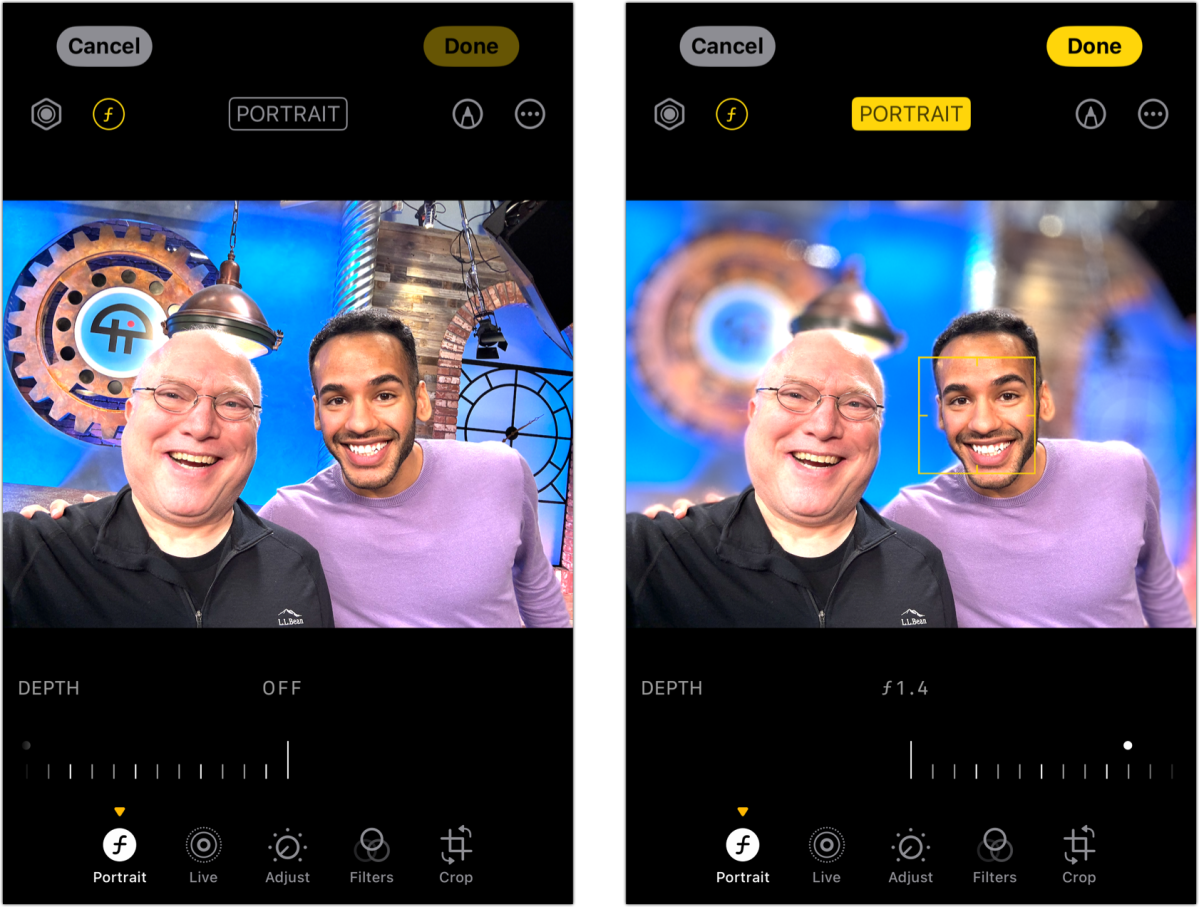
Adjust a photo with depth (here, captured automatically on an iPhone 15 Pro) in Photos for iOS/PadOS by pressing the Portrait button ƒ and dragging the depth control. Left: no depth modification; right: set to an artificial maximum f-stop for shallowest foreground focus.
Foundry
In Photos for macOS:
- Select a photo and click on the To modify button.
- Use the Portrait section on the right Adjust sidebar to change both Depth And Light settings.
- Click on Do to save the change.
Change focal point
If you took photos with an iPhone 13 or later, you can change not only the depth of the background, but also the focal point of the photo. (This requires iOS 16 or later. iPads can change but not capture depth this way.) Follow these steps, almost identical to adjusting depth.
Under iOS/iPadOS:
- Select a photo and press the To modify button.
- Select Portrait ƒ if not selected, and the depth slider appears. Tap anywhere on the photo to move the focus.
- Faucet Do Once finished.
In Photos for macOS:
- Select a photo and click the Edit button.
- With Adjust selected at the top of the screen, you can click anywhere on the photo to move the focus.
- Click on Do to save the change.
You can go back and make changes to the focal point later in Photos on any platform.
Create artificial depth in “flat” photos
Any iPhone 15 model automatically captures depth information when you compose a photo in the Camera app that includes a person, cat, or dog. You don’t have to choose the Portrait option: it’s a bonus that lets you apply depth or change focus later. (Be sure that Settings > Camera > Portraits in photo mode is enabled, although Apple enables it by default.)
You can take a photo using the selfie camera or the rear-facing camera system, but the conditions should be largely the same as you would use if you had chosen Portrait as your mode: a figure or character should be at least a few feet away and anything behind them should move a few feet away. iOS alerts you that an image qualifies by displaying an ƒ in the lower left corner while you compose your photo. You can press ƒ to preview the depth as described above.
Checking my Photo Library, out of 1,500 iPhone 15 Pro photos, about 10 had automatic portrait capture applied. I just tested it in what seemed like an ideal setting with my youngest child and couldn’t get an ƒ icon to appear. However, in almost all cases using the front camera, the ƒ appears immediately.
Find photos with depth
Once captured, you can go to Photos on any of your devices and access Media Types > Portraitwhich displays a mix of auto-captured depth images and images you’ve specifically used Portrait mode with.
On a Mac, you can create a Smart Album in Photos to at least limit it to images taken via an iPhone 15 if you want to look at a smaller set of photos that will include all automatic depth captures:
- Choose File > New Smart Album.
- Set the criteria in two lines: camera model, included, iPhone 15; click on +; and Photo, i.e. portrait.
- Name the album descriptively, like “Portraits on iPhone 15” and click ALL RIGHT.

A Smart Album in Photos for macOS can make it easier for you to view depth-rich images taken by an iPhone 15 model.
Foundry
Ask Mac 911
We’ve compiled a list of the questions we get asked most frequently, along with answers and links to columns: read our super FAQ to see if your question is covered. Otherwise, we are always looking for new problems to solve! Send yours to [email protected], including screenshots where applicable and if you would like your full name used. We will not answer all questions, we do not respond to emails, and we cannot provide direct troubleshooting advice.
Table of Contents

